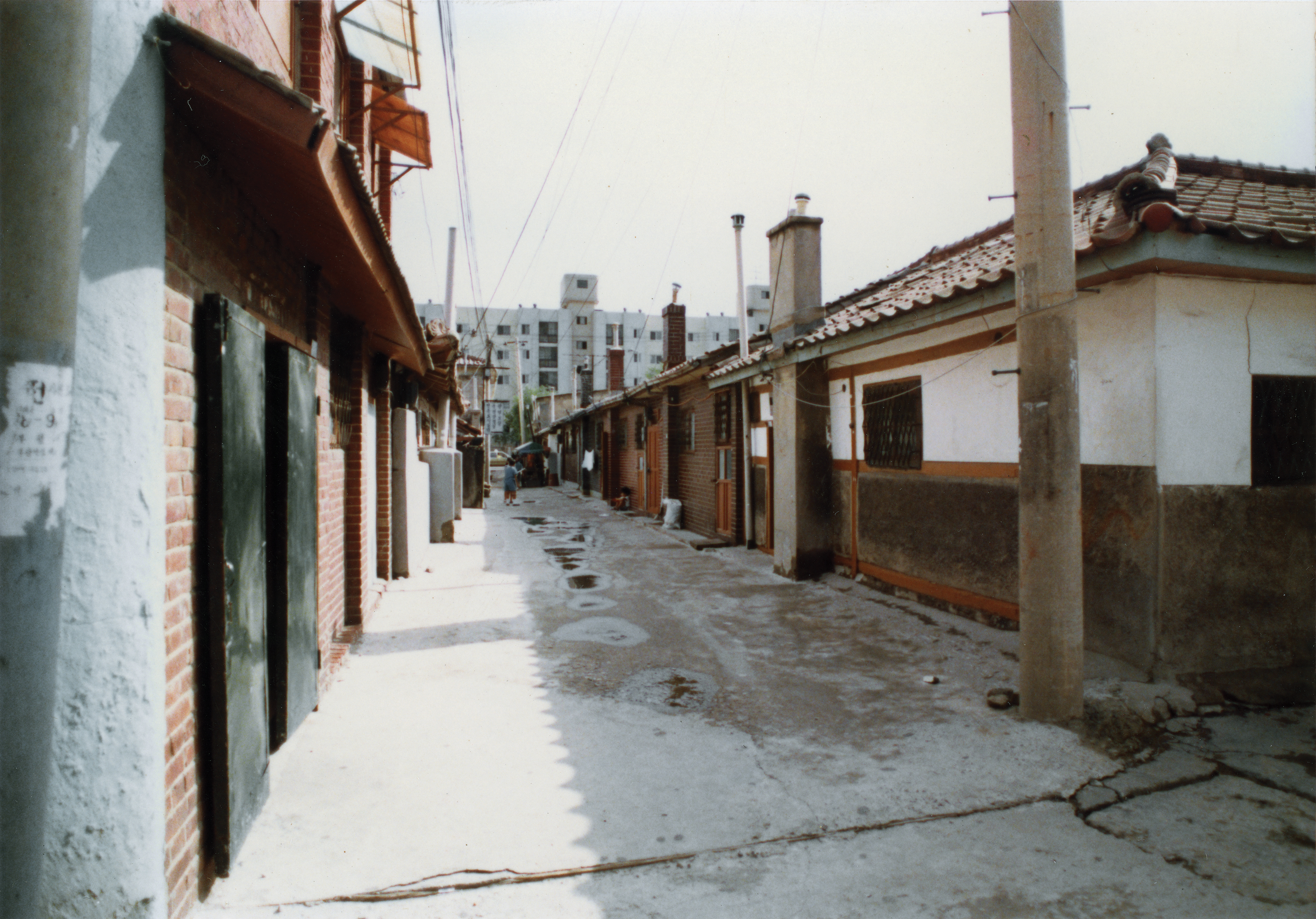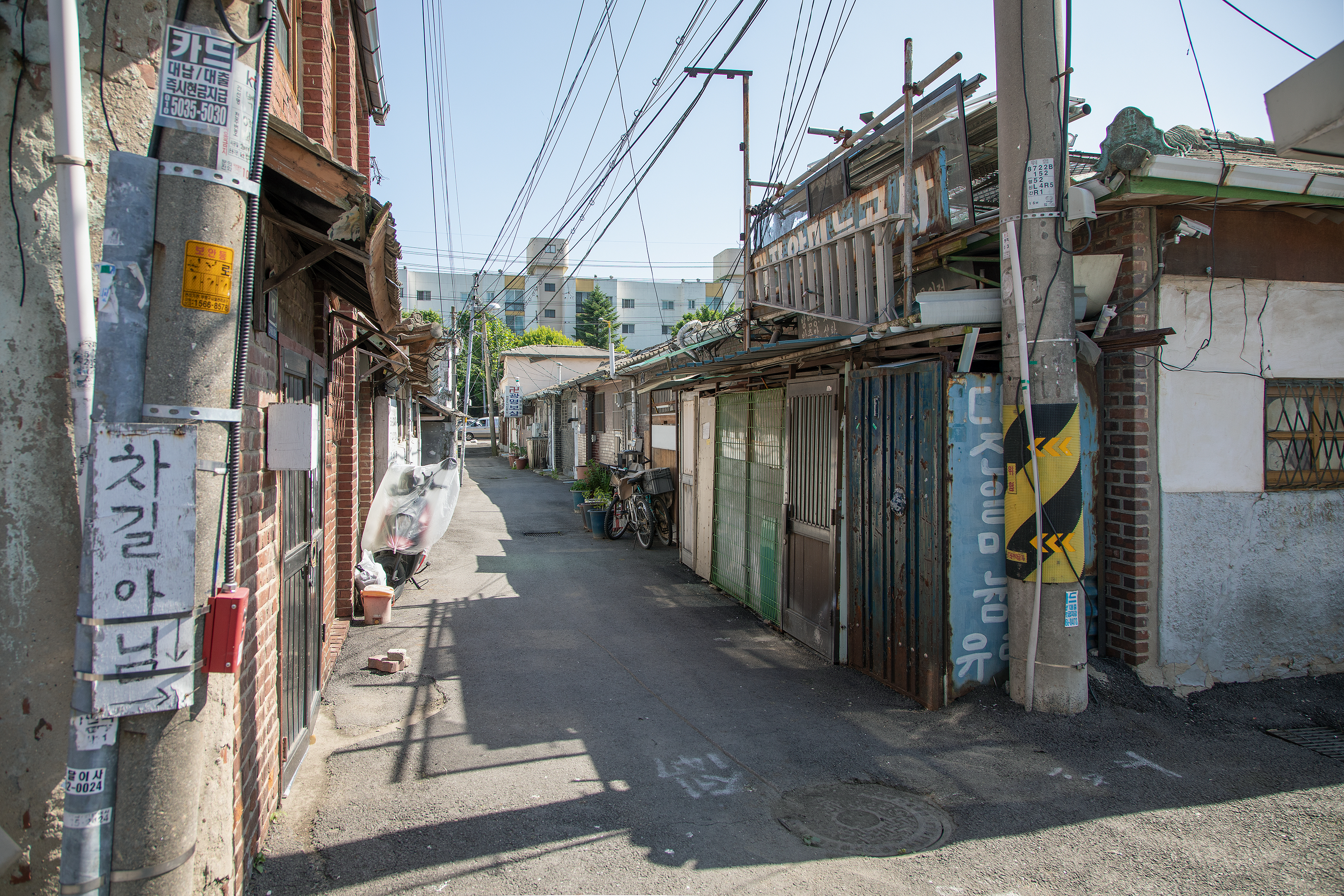SPACE August 2023 (No. 669)

View of Bupyeong Yeongdan House in 1985 – 1988s by Tomii Masanori / ©Tomii Masanori

View of Bupyeong Yeongdan House in 2021 by Oh Sukkuhn / ©Oh Sukkuhn
A joint academic conference between the Bupyeong History Museum and Korea Association for Architectural History (KAAH) was held this June 29, with the title of ‘The Values and Current Status of the Bupyeong Yeongdan House’. The academic conference was arranged to share the results of an academic survey conducted to keep a record of the Bupyeong Yeongdan Houses scheduled to be demolished this year due to an urban redevelopment project. Yeongdan house refers to the housing provided by the during the Japanese colonial period to solve housing shortages for workers working in the military industry. Tomii Masanori (professor, guga urban architecture) said in his keynote lecture that the Bupyeong Yeongdan House has high historical value as an example of being built in the style of a hanok, even though it was built by Japan as part of the colonial cultural policy in four East Asian countries. Oh Sukkuhn (principal, Peach Blossom) then introduced the project of Dongincheon Explorer, which films the Bupyeong Yeongdan Houses of today, filmed with the theme of ‘Bupyeong Yeongdan House in the 1940’s, 1980’s, and 2020’s’. He documented the changes of the Bupyeong Yeongdan House by pinpointing the exact location of the picture taken by Tomii Masanori in the 1980’s during his research on the Bupyeong Yeongdan Houses. Subsequently, the first presenter of the theme presentation, Son Minhwan (curator, Bupyeong History Museum) explained the ‘creation and changes of the Bupyeong Yeongdan House’. In the Bupyeong area, where the construction of military bases was in progress, Gyeongin Company Corporation built a joint residence with an old private hanok-style house and a training camp for the purpose of serving as a residence for the employees of the arsenal. Later, after the Joseon Housing Administration purchased the old house, they additionally built on a Japanese-style nagaya house. Following this presentation, Lee Euijung (principal, Ongnomaneo) presented with a theme of ‘Change processes in the Bupeyong Yeongdan Housing Training Camp’. During the demolition of the training camp discovered by Son Minhwan during the Dongincheon Explorer project, he estimated the process of expansion and reconstruction and the original shape through on-site investigations. Jung Yonhak (curator, National Folk Museum of Korea), who was the original presenter for the theme of ‘The life and culture of the residents of the Bupyeong Yeongdan House’, was unable to attend and therefore the presentation was read on behalf of Jung by Jang Minyoung (curator, Bupyeong History Museum). In his presentation, he mentioned that the residents made a living mostly off sub-leases, and introduced how the life of residents have changed through the years of Japanese colonial period, the US military administration, the Korean War, and industrialisation. This academic conference confirmed that although progress has been made in the research and documentation of the Bupyeong Yeongdan House, research topics that need to be addressed in the future still remain. Panels concluded by expressing their hope of conserving a few buildings for the sake of research. by Kim Bokyung





